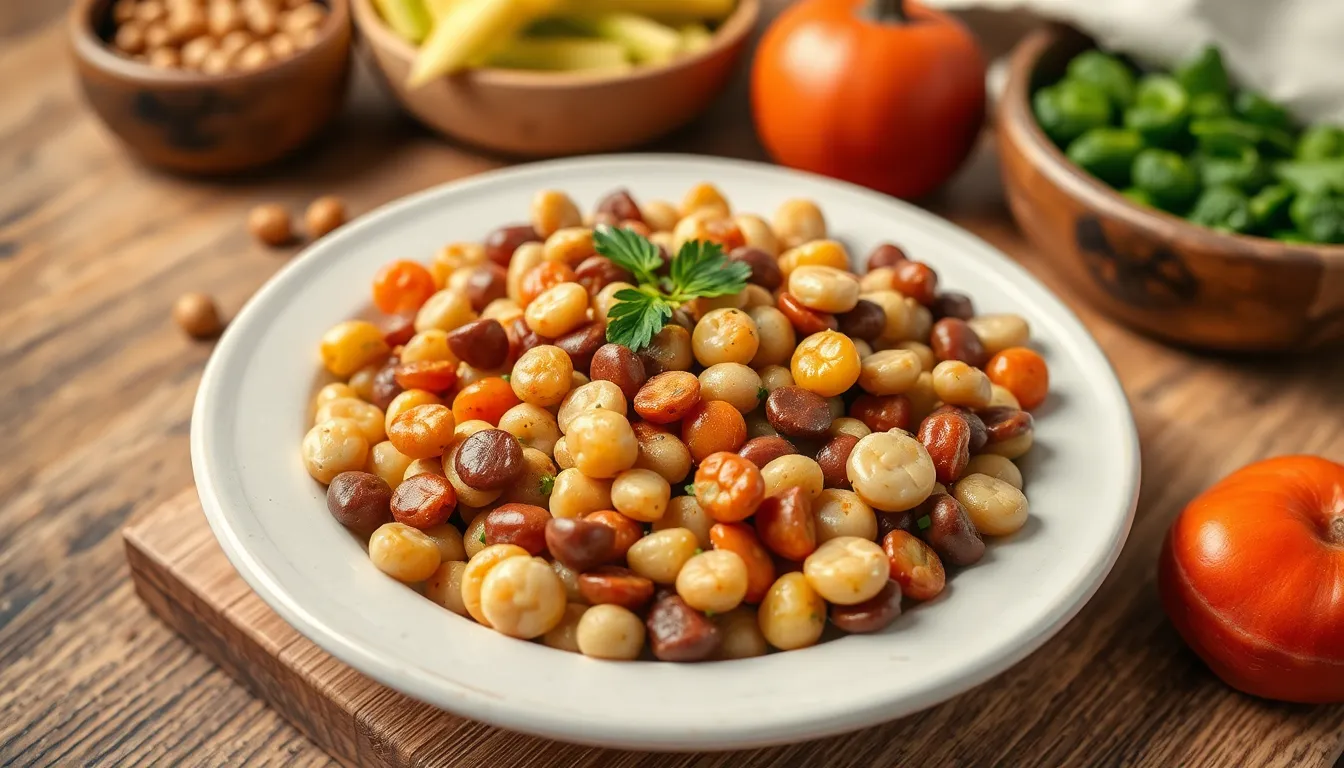Legumes and Fiber: The Key to a Healthy Gut
Introduction
In recent years, the importance of gut health has been gaining significant attention, both in medical circles and the culinary world. A healthy gut is crucial for overall wellness, affecting everything from digestion to mental health. Among the various foods that contribute to gut health, legumes stand out as a powerhouse of dietary fiber. This article aims to explore the incredible benefits of legumes and their vital role in promoting a healthy gut.
Section 1: Understanding Gut Health
Gut health refers to the balance of microorganisms living in the digestive tract. A well-functioning gut is essential for digestion, nutrient absorption, and immune function. The gut microbiome—the collection of trillions of bacteria and other microorganisms—plays a pivotal role in our overall well-being. When the gut microbiome is balanced, it helps to:
- Improve digestion and absorption of nutrients
- Support immune function
- Regulate mood and mental health
- Prevent gastrointestinal diseases
Maintaining a balanced gut microbiome is essential for optimal health, and diet plays a crucial role. Incorporating foods rich in fiber, particularly legumes, can dramatically improve gut health.
Section 2: What Are Legumes?
Legumes are a family of plants known for their pod-like structure and high nutritional value. They are an excellent source of protein, vitamins, and minerals. Common types of legumes include:
- Lentils
- Beans (e.g., black beans, kidney beans, pinto beans)
- Chickpeas (also known as garbanzo beans)
- Peas (e.g., green peas, split peas)
Legumes are not only versatile in cuisine but also boast an impressive nutritional profile:
- High in protein
- Rich in vitamins (such as B vitamins)
- Loaded with essential minerals (such as iron, magnesium, and potassium)
Section 3: The Role of Fiber in Gut Health
Fiber is a crucial component of a healthy diet, often classified into two main types:
- Soluble Fiber: Dissolves in water and can help lower blood cholesterol and glucose levels.
- Insoluble Fiber: Does not dissolve in water and helps add bulk to stool, aiding in regularity.
Both types of fiber play significant roles in digestion and gut health:
- They promote regular bowel movements.
- They provide food for beneficial gut bacteria.
- They help maintain a healthy weight by promoting satiety.
The recommended daily fiber intake varies by age and gender, but a general guideline is:
- Women: 25 grams
- Men: 38 grams
Section 4: Benefits of Legumes for Gut Health
Subsection 4.1: High Fiber Content
One of the most prominent benefits of legumes is their high fiber content. The fiber in legumes supports digestion by:
- Promoting regularity
- Preventing constipation
- Reducing the risk of gastrointestinal disorders
Subsection 4.2: Prebiotic Properties
Prebiotics are compounds that nourish beneficial gut bacteria. They play a crucial role in maintaining a healthy gut microbiome. Legumes act as prebiotics by:
- Providing food for good bacteria
- Helping to inhibit the growth of harmful bacteria
Incorporating legumes into your diet can thus support the growth of beneficial gut bacteria, which is vital for a balanced gut microbiome.
Subsection 4.3: Impact on Gut Microbiota
Research indicates that consuming legumes can enhance the diversity of gut bacteria. A diverse gut microbiome is linked to improved health outcomes, including:
- Better digestion
- Improved immune function
- Reduced risk of chronic diseases
Legumes provide the nutrients that various gut bacteria thrive on, fostering a symbiotic relationship that benefits overall health.
Section 5: Cooking with Legumes
Incorporating legumes into your diet can be both easy and delicious. Here are some tips for cooking with legumes:
- Soaking: Soaking beans and legumes before cooking can reduce cooking time and improve digestibility.
- Boiling: Most legumes can be boiled, but cooking times vary greatly, so check for doneness.
- Pressure Cooking: A convenient method that can significantly reduce cooking time for legumes.
Below is a table comparing the nutritional content and cooking times of common legumes:
| Legume Type | Serving Size | Fiber Content (g) | Protein Content (g) | Cooking Time (minutes) |
|---|---|---|---|---|
| Lentils | 1 cup (cooked) | 15.6 | 18 | 15-20 |
| Chickpeas | 1 cup (cooked) | 12.5 | 15 | 30-40 |
| Black Beans | 1 cup (cooked) | 15 | 15 | 30-60 |
| Kidney Beans | 1 cup (cooked) | 13.1 | 15.3 | 30-40 |
| Peas | 1 cup (cooked) | 8.8 | 8.6 | 5-10 |
In conclusion, legumes are an incredible addition to any diet. Their high fiber content, prebiotic properties, and ability to enhance gut microbiota make them essential for maintaining a healthy gut. By incorporating legumes into your meals, not only can you support your gut health, but you also reap the benefits of their rich nutritional profile. So, the next time you’re planning your meals, consider adding a variety of legumes to your plate for a healthier, happier gut.




